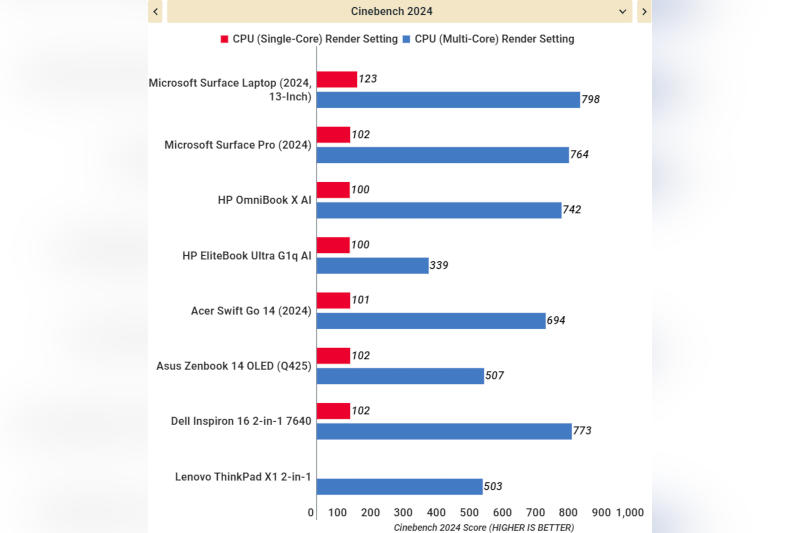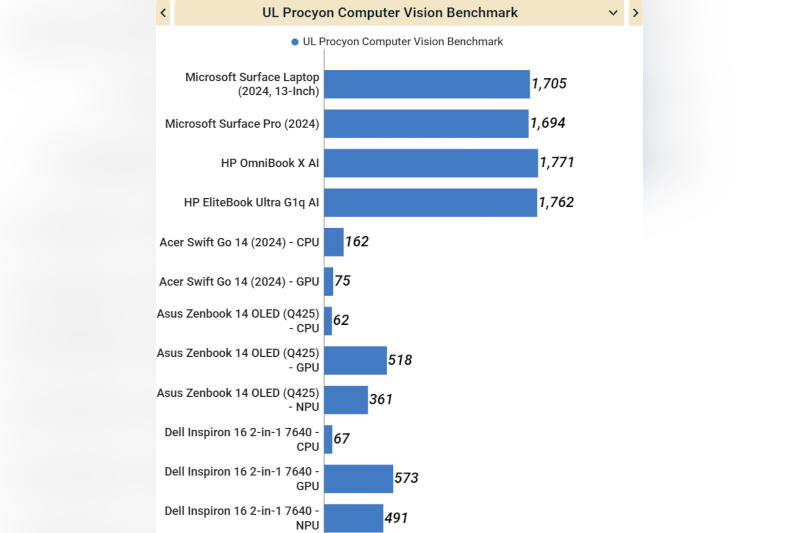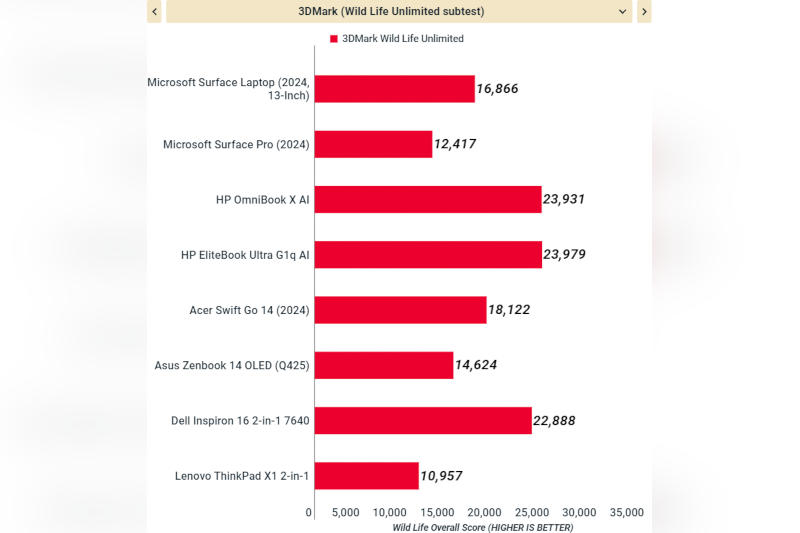The first wave of Copilot+ PCs have gone on sale, showing what Microsoft is trying to achieve. These are computers powered by Qualcomm Snapdragon X Elite chips based on Arm, which in theory offer the same benefits as Macs powered by Apple’s M-series chips. As it turns out, the new segment will need some time to catch on, and for now, these computers are only for tinkerers.

Image source: pcmag.com
PCMag tested a Microsoft Surface laptop called the Copilot+ PC, and it’s not a cheap machine at $1,999. For that price, it comes with a flagship 12-core X Elite chip with 32GB of RAM and 1TB of storage. The 13.8-inch version of the computer was reviewed, but it’s also available in a 15-inch version.

The Snapdragon X Elite chip includes a central, graphic and neural (NPU) processors – the latter demonstrates the performance of 45 TOPS, while Copilot+ PC requires at least 40 TOPS. Previous versions of AMD and Intel mobile chips had NPUs with the performance of 11-16 TOPS. Tests have shown that the Arm chip largely corresponds to the declared characteristics: it demonstrates high performance of the central processor, thanks to the NPU, artificial intelligence algorithms work quickly, and the battery life reaches an impressive 25 hours.

But the lack of Windows applications optimized for Arm remains a huge problem – this applies to both games and applications, which work significantly slower with the Prism emulator than native ones. Of the games, only the 3Dmark synthetic tests are optimized. Applications launched through the emulator can work fine, but sometimes they freeze or produce unpredictable errors, Android Authority notes.

The authors of the reviews conclude that if you want to buy a Copilot+ PC class laptop, it is better to wait for models with AMD Ryzen AI 300 or Intel Lunar Lake chips for now – x86 processors will not require any emulation, you will not have to look for software optimized for the Arm architecture. AMD intends to release its processors in July, and Intel chips will appear in the fall. The situation with the lack of software for Arm processors will undoubtedly change in the next year or two, since Microsoft is developing this direction. Arm even intends to capture 50% of the Windows PC market in 5 years, but now, apparently, there is no need to rush.